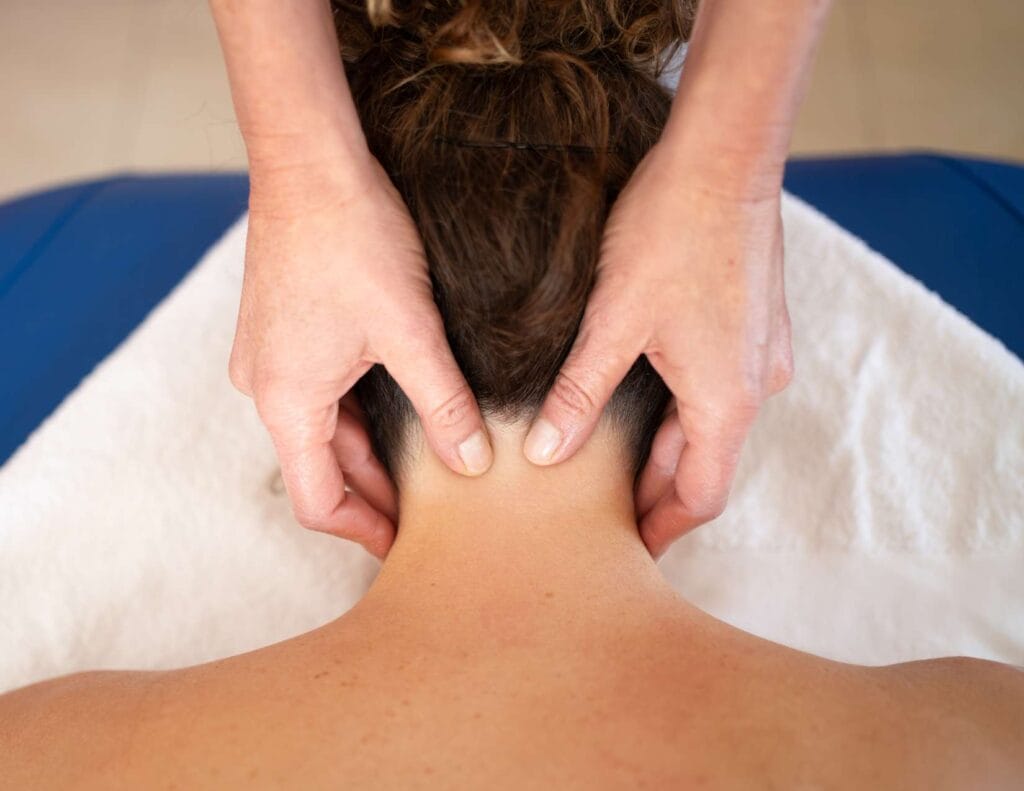Trigger Point Therapy Explained: Techniques And Benefits You Need To Know
Last Updated on February 18, 2025 by Dr. Tiffany Egan
As a long-time healthcare practitioner and advocate for holistic healing, I’ve discovered that one of the most effective yet underutilized techniques for pain relief is trigger point therapy. This powerful method has transformed not only my own wellness journey but also that of countless clients I’ve worked with over the years. In this comprehensive guide, I’ll share my knowledge and experience to help you harness the healing potential of trigger point therapy in the comfort of your own home.
Understanding Trigger Point Therapy: A Natural Pain Relief Approach
Trigger point therapy is a non-invasive, drug-free approach to managing pain and improving overall body function. At its core, this technique involves applying pressure to specific points in the body to alleviate pain and tension. As someone who has battled chronic pain in the past, I can reassure you that this is a very effective method.
The beauty of trigger point therapy lies in its simplicity and accessibility. Unlike many other treatments that require professional intervention, trigger point therapy can be easily learned and practiced at home. This empowers individuals to take control of their own healing process, which I find incredibly liberating.
Over the years, I’ve witnessed countless success stories from people who have incorporated trigger point therapy into their daily routines. From office workers plagued by neck and shoulder pain to athletes recovering from injuries, the techniques are vast and varied.

The Science Behind Trigger Points and Their Impact on Pain
To truly appreciate the power of trigger point therapy, it’s essential to understand the science behind it. Trigger points are hyperirritable spots in the fascia surrounding skeletal muscle. These points are associated with palpable nodules in taut bands of muscle fibers. When activated, trigger points can cause pain, reduced range of motion, and other symptoms.
The fascinating aspect of trigger points is their ability to refer pain to other areas of the body. For instance, a trigger point in your upper back might cause pain in your neck or even contribute to headaches. This phenomenon explains why traditional treatments focusing solely on the area of pain often fall short.
Through my research and practice, I’ve come to understand that trigger points can develop due to various factors, including:
- Acute trauma to muscle tissues
- Chronic overuse of muscles
- Emotional stress
- Poor posture
- Nutritional deficiencies
By addressing these underlying causes and applying targeted pressure to trigger points, we can effectively break the cycle of pain and tension.
Common Areas for Trigger Point Therapy: Neck, Back, and Headaches
In my experience, some of the most common areas that benefit from trigger point therapy are the neck, back, and head. These regions are particularly susceptible to tension and pain due to our modern lifestyles, which often involve prolonged periods of sitting and poor posture. Have you heard of tech neck?
Neck Pain
For neck pain, I’ve found that focusing on the following muscles can provide significant relief:
- Trapezius
- Levator scapulae
- Sternocleidomastoid
When working on these areas, I recommend using gentle, sustained pressure for 30-60 seconds on each trigger point. Remember to breathe deeply and relax into the sensation.
Back Pain
Back pain is another prevalent issue that responds well to trigger point therapy. Key areas to target include:
- Quadratus lumborum
- Erector spinae
- Latissimus dorsi
I often advise my clients to use a tennis ball or foam roller to access these points, especially in the lower back region.
Headaches
Surprisingly, many headaches can be alleviated through trigger point therapy. The most effective points to address are often found in:
- Suboccipital muscles
- Upper trapezius
- Temporalis
By incorporating regular trigger point work and chiropractic neck exercises on these areas, I’ve seen remarkable reductions in the frequency and intensity of headaches in many individuals.
Are you a migraine headache sufferer? Here are some helpful ways tens units can help with your migraine.
If you experience jaw pain or TMJ, you may also get frequent headaches. These articles about natural remedies for TMJ and TMJ neck pain are helpful! You could also check out CBD for neck and shoulder pain as well.

Trigger Point Therapy Techniques for Sciatic Nerve Pain Relief
Sciatic nerve pain can be debilitating, but I’ve found trigger point therapy to be an excellent tool for managing this condition. I experienced a lot of sciatica during pregnancy which also feels a lot like piriformis syndrome in pregnancy !
The key is to focus on the muscles that may be compressing the sciatic nerve, particularly:
- Piriformis
- Gluteus minimus and medius
- Hamstrings
Here’s a simple technique I often recommend for sciatic pain relief:
- Lie on your back with a tennis ball under your glutes.
- Slowly roll onto the ball until you find a tender spot.
- Hold pressure on this point for 30-60 seconds, breathing deeply.
- Gently rock back and forth to increase the release.
- Repeat on other tender areas.
Remember, consistency is key when dealing with sciatic pain. I suggest performing these techniques daily for optimal results. Here are some more tennis ball exercises for sciatica to try!
Unlocking the Power of Psoas Release Trigger Points
The psoas muscle, often referred to as the “hidden prankster,” plays a crucial role in our posture and core stability. Releasing trigger points in this deep-seated muscle can have profound effects on overall well-being.
In my practice, I’ve seen psoas release trigger point therapy help with:
- Lower back pain
- Hip discomfort
- Digestive issues
- Emotional stress
To access the psoas, try this gentle technique:
- Lie on your back with knees bent and feet flat on the floor.
- Place your fingertips just inside your hip bones.
- Sink in slowly, breathing deeply, until you feel a slight discomfort.
- Hold for 1-2 minutes, focusing on relaxing the area.
This release can be intense, so I always advise my patients to start gently and listen to their bodies.

Essential Tools for Performing Trigger Point Therapy at Home
One of the aspects I love most about trigger point therapy is its accessibility. With just a few simple tools, you can create an effective home practice.
Here are my top recommendations:
- Foam roller: Great for larger muscle groups like the back and legs.
- Tennis or lacrosse ball: Perfect for targeting smaller areas and hard-to-reach spots.
- Theracane or Body Back Buddy: Excellent for self-massage and reaching trigger points in the back and neck.
- Massage stick: Ideal for rolling out muscles in the legs and arms.
- Acupressure mat: Provides overall relaxation and stimulation of multiple trigger points.
Investing in these tools has been a game-changer for my personal practice and that of my patients. They allow for regular, consistent work on trigger points, which is key to long-term pain relief and improved mobility.
Step-by-Step Guide to Self-Administered Trigger Point Therapy
Now that we’ve covered the essentials, let me walk you through a step-by-step process for self-administered trigger point therapy:
- Identify the painful area: Start by locating the region where you’re experiencing pain or discomfort.
- Explore surrounding muscles: Using your fingers or a tool, gently probe the muscles around the painful area to find tender spots or knots. Sometimes it’s easier to have someone else poke around so you can concentrate on the exact location.
- Apply pressure: Once you’ve found a trigger point, apply steady pressure. The sensation should be intense but not unbearable.
- Hold and breathe: Maintain pressure for 30-90 seconds while taking deep, relaxing breaths.
- Release and reassess: Slowly release the pressure and notice any changes in sensation or pain levels.
- Repeat: Move on to other trigger points in the area, repeating the process.
- Stretch: After working on an area, gently stretch the muscles to promote further release.
Remember, consistency is key. I recommend only dedicating 10-15 minutes daily to your trigger point practice for best results. There’s usually no need to go any longer and if you do, it could even cause more discomfort or inflammation.

Combining Trigger Point Therapy with Other Healing Modalities
While trigger point therapy is powerful on its own, I’ve found that combining it with other healing modalities can amplify its effects. Some complementary practices I often recommend include:
- Yoga: Helps improve flexibility and body awareness, making trigger point work more effective.
- Meditation: Reduces overall stress levels, which can contribute to muscle tension.
- Acupuncture: Works well in conjunction with trigger point therapy to address pain and promote healing.
- Heat therapy: Applying heat before trigger point work can help relax muscles and increase blood flow.
- Cold therapy: Using ice after trigger point sessions can help reduce any inflammation.
By integrating these practices, you create a holistic approach to pain management and overall wellness.
Precautions and Contraindications for Trigger Point Therapy
While trigger point therapy is generally safe, there are some precautions to keep in mind. As someone who values responsible practice, I always emphasize the following:
- Avoid areas of acute injury or inflammation
- Use caution if you have osteoporosis or are prone to bruising
- Never apply pressure directly over bones, nerves, or arteries
- If you’re pregnant, consult with your healthcare provider before starting
- Stop if you experience increased pain or discomfort
It’s also important to note that trigger point therapy should not replace professional medical advice. If you have chronic pain or a specific medical condition, always consult with a healthcare professional before starting any new therapy.
Long-Term Benefits of Incorporating Trigger Point Therapy into Your Wellness Routine
From my years of practice and personal experience, I can attest to the numerous long-term benefits of regular trigger point therapy:
- Improved posture: By releasing chronic muscle tension, you naturally fall into better alignment.
- Enhanced flexibility: Regular work on trigger points can lead to increased range of motion.
- Better sleep: Reducing muscle pain and tension often results in improved sleep quality.
- Stress reduction: The focused nature of trigger point work can have a meditative effect, reducing overall stress levels.
- Increased body awareness: Over time, you become more attuned to your body’s signals and needs.
These benefits compound over time, contributing to an overall sense of well-being and vitality.

Expert Tips for Maximizing the Effectiveness of Your Trigger Point Practice
To help you get the most out of your trigger point therapy practice, here are some expert tips I’ve gathered over the years:
- Be consistent: Regular, short sessions are more effective than infrequent, long ones.
- Stay hydrated: Drinking plenty of water helps flush out toxins released during therapy.
- Use proper technique: Focus on applying slow, steady pressure rather than aggressive rubbing. Use your middle finger as it is the longest and easiest to use.
- Listen to your body: If something feels too painful or uncomfortable, back off.
- Combine with movement: Incorporate gentle stretches or exercises after your trigger point work.
- Be patient: Healing takes time. Trust the process and stay committed to your practice.
By following these tips, you’ll set yourself up for success in your trigger point therapy journey.
Conclusion: Empowering Yourself with Trigger Point Therapy Skills
As we wrap up this comprehensive guide, I want to emphasize the empowering nature of trigger point therapy. By learning and practicing these techniques, you’re taking an active role in your health and well-being. You’re no longer at the mercy of pain or discomfort; instead, you have tools at your disposal to address issues as they arise.
Remember, the journey to mastering trigger point therapy is ongoing. Be patient with yourself, stay curious, and keep exploring. Your body has an incredible capacity for healing, and trigger point therapy is a powerful way to tap into that potential.
As you embark on your trigger point therapy journey, remember that you’re not alone. Feel free to reach out with any questions or share your experiences. Here’s to your health, vitality, and the power of self-healing!







